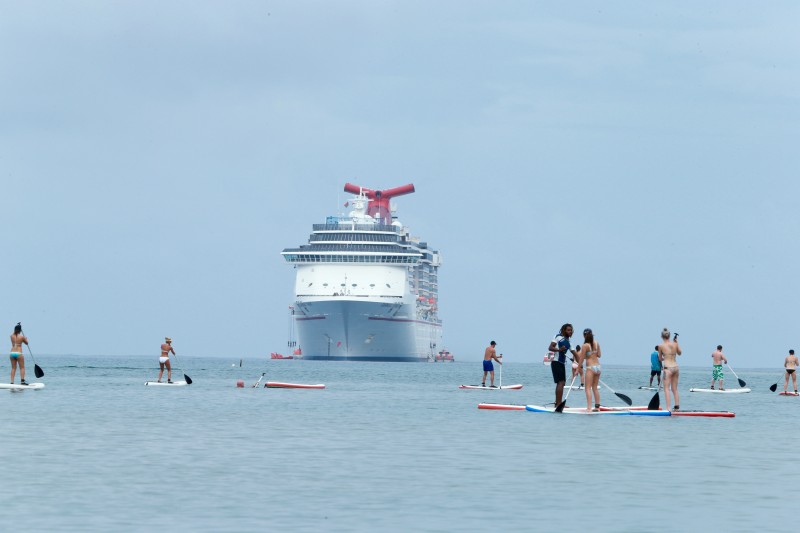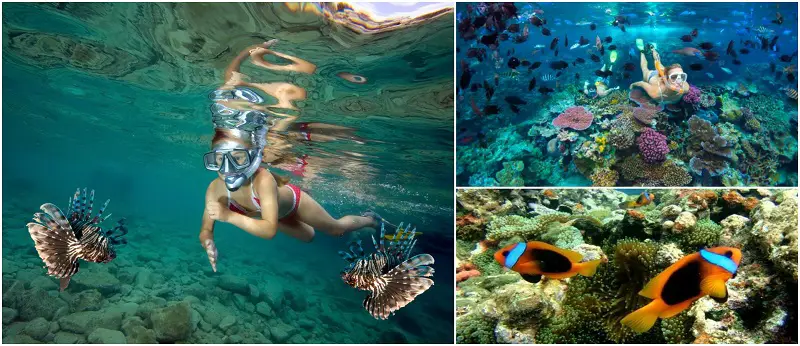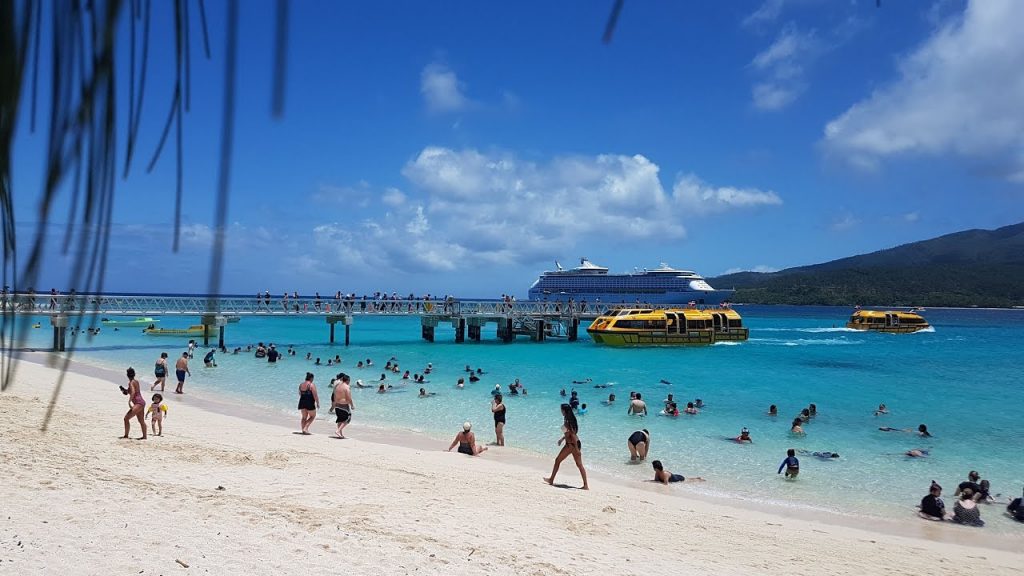Mystery Island: “The biggest mystery is why nobody lives in such a beautiful haven”
Often known as ‘The Happiest Place on Earth’, Vanuatu archipelago brings together old-fashioned charm and hospitality of the bygone decades, traditional village life and the unsullied flora and fauna that you can only read about in a magazine. Based on the Happy Planet Index, Vanuatu is ranked fourth out of 140 countries in the world, beating Japan at 58th, and the United States at 108th. The indigenous Melanesian people of Vanuatu are termed as ni-Vanuatu and consist of over 98% of the population. The minority rest are made up of Europeans, Asian and other Pacific Islander immigrants. The Melanesian seed of Vanuatu has ripened over centuries to gift Vanuatu an incredible tapestry of history, culture, and lore. This ‘Y’ shaped archipelago has held steadfastly to values, mythology and traditions spanning hundreds of years. The island nation is situated about 1,750 kilometers east of Australia, northeast of New Caledonia, east of Papua New Guinea, southeast of the Solomon Islands, and west of the Fiji Islands. It consists of roughly 83 islands and atolls (65 uninhabited). One of the uninhabited island of Vanuatu that is untouched by modern society and holds secret gems is Mystery Island. With a name like that, this tiny islet is an obvious top site to visit.
Officially charted under the indigenous name Inyeug (means Small Island), Mystery Island located in the southernmost of Vanuatu, just offshore of Tanna Island and only one km south of the island of Aneityum. The island is not large, with an area of about 15.9 hectares, barely two-thirds of a mile long and a little more than a couple of hundred yards wide. It is small enough to walk around the whole coast in 20 minutes, so you can experience everything from the tranquil to the taboo in a single visit. But despite of its tiny size, Mystery Island has big vision of a castaway paradise. The incredibly beautiful conglomeration of pure white sand beaches set in luminous turquoise waters and coral reefs, palm trees and pandanus fringing the shorelines, provides the perfect place to relax and unwind.

Mystery Island only has zero population. No one lives on the area as it is considered taboo to do so. According to local tales, the island’s original name was bestowed by Queen Elizabeth II who visited in 1975 aboard the Royal Yacht Britannia. Her entourage stopped for a picnic and were instantly captivated. The island is actually steeped in superstition and locals believe it’s haunted by spirits. This tale keeps Inyeug uninhabited, but also made it a perfect lair for 19th century ‘blackbirder’s’ like Captain James Paddon, men who would snatch locals to work on plantations back in Australia in the mid-19th century. It was after ‘discovery’ by Her Royal Highness that word spread and soon guests from cruise ships such as Fairstar, were being brought ashore for a day of idyllic relaxation on the magnificent beaches of newly christened Mystery Island. There is no electricity, running water, roads, or telephones on the island. However, the island has been developed into a castaway-type resort for visiting cruise ships, with water sports and cultural activities, as well as shopping for locally produced handcrafts. In contrast to the sad history of the blackbirder, cruise lines have worked hard with the locals and provided a boat to help them ferry supplies and develop activities for the guests and earn extra income for their communities. Other than an airstrip to serve the nearby island of Aneityum, there are a few huts for overnighters, modern amenities for cruise passengers and some trails that bisect the island. The grassy landing strip was originally cleared to serve the Allied forces during WWII and still receives two commercial flights a week. Except for those briefly busy days, and the days when cruise ship tenders arrive at the dock, Mystery Island is completely uninhabited. On cruise ship days though, the friendly folk from nearby Aneityum island come over to chat and sell souvenirs and tropical fruit and sometimes set up grills to prepare simple meals. These days represent a major source of income for Aneityum Island.

Mystery Island is adjacent to incredible coral reefs that are rich in color and sea life. During a snorkelling excursion on Mystery Island, cruise passengers have the opportunity to see a variety of fish darting in and around the coral formations. Lucky visitors could even see seahorses, reef sharks, and sea turtles. Choosing the best time to visit this stunning island is really a personal preference. Thanks to the beautiful tropical climate, the weather is generally good all year round, however conditions are at their best from April to October when temperatures are a comfortable 18°C to 28°C. November to March sees the arrival of the wet season and although showers are generally brief and do not impact most tours and activities, they can also make conditions much warmer and more humid. Year-round water temperatures sit at a mild 22°C to 28°C, so no matter when you visit swimming is always enjoyable.

The Mystery Island receives between 15 to 20 cruise ships a year with thousands of tourists flooding the island per trip. In contrast to the sad history of the blackbirder, cruise lines have worked hard with the locals and provided a boat to help them ferry supplies and develop activities for the guests and earn extra income for their communities. But maintaining the island in its pristine condition is also part of the job. Mystery Island was in the 1950s made up of two islands known respectively as the islands of Navinacas and Ningec raised from very large coral base covering more than a square kilometer of reef. It is believed that was due to the closing of the Nitkanohou passage on the western side of the large reef that stopped the tide from its continuous flow between the two islets thus encouraging the sand build up which eventually bridged the two islets together. Traditionally, the two islands and their reefs were used as a common fishing ground for the people of Aneityum Island. Due to intensive harvesting of shells and fish for home consumption and income generation, these once abundant resources became very scarce that the conservation project and the community decided to protect the area to replenish the resources and to attract more tourists to the area. One of the conservation efforts, called The Tourist Project, is directly responsible for the Mystery Island Marine Protected Area. The Tourist Project now operates a bungalow on the island, a marketplace, a boat that freely ferries people to the island. They employ two full time workers. One is responsible for the general maintenance of the bungalows and the other is responsible for the daily feeding of fish in the Marine Protected Area. They also have a team of security to ensure that people do not remove resources from the MPA and to provide security for tourists coming especially on cruise ships.
